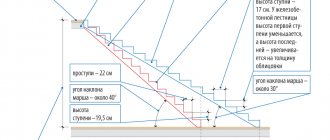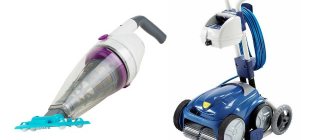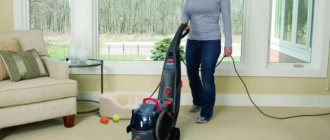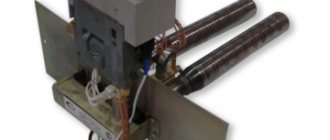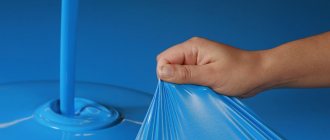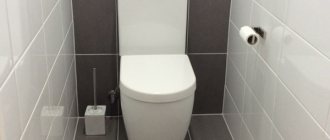A vacuum cleaner is a unit whose operating principle is similar to a turbine and is designed to clean rooms from dirt and dust by suction.
The classic version is an engine with a through passage of the air flow on one side, it sucks in air, and on the other, it emits air; in front of the incoming air flow, filters are installed to catch debris (dust collection bag, turbo containers).
Types and types of vacuum cleaners
Types
There are several types of vacuum cleaners based on their scope of application and functionality: classic, vertical, automotive, robotic, built-in.
Classic – used for premises of various types and purposes.
Available in three versions:
- Cylinder – used for dry and wet cleaning, equipped with three types of dust collectors – a bag, a container and a water filter.
- Vertical - a device without a classic housing, structurally designed in the form of a dust collector combined with a suction pipe. Vertical vacuum cleaners have an attractive design, ergonomic body, light weight and do not take up much space.
- Combined - combines the best qualities of balloon and vertical types. Used for cleaning large areas with smooth surfaces (hotels, concert halls, etc.).
Robotic - designed for automatic cleaning without human intervention - the operation of the unit is controlled based on built-in sensors. Equipped with a battery and a dust collector - container.
They are presented in a round case with a diameter of 30-40 centimeters and a height of 10 cm, which ensures thorough cleaning of rooms in hard-to-reach places.
The standard package includes a charger and the necessary set of attachments.
Automotive - devices in a compact case with low suction power. Used for dry cleaning: cleaning car interiors and upholstered furniture.
They are powered by a battery, the cigarette lighter in the car and a standard household network. Supplied with a standard set of attachments and a case for secure storage.
Built-in . In different rooms of the home there are pneumatic outlets, to which a hose is connected to suck up dust. Pneumatic inlets perform the function of an air conductor, and the unit itself is located in a separate room (loggia, storage room). The design is practical, has a reduced noise level and is harmless, since all air purification processes take place in non-residential premises.
Type of cleaning
All devices are divided into two categories: for dry (classical) and wet cleaning (washing). Some models are equipped with a built-in steam generator for cleaning surfaces and products using steam.
For dry cleaning : incoming air containing dust and debris is sucked through the pipe and filtered. The purified air enters the room, and the collected dust accumulates in a special dust collector.
Suitable for use in city apartments, houses, small offices and shops. Such units are vertical, balloon, built-in and robotic.
For wet cleaning of large areas and open areas, washing units are used. They allow you to effectively clean rooms and humidify the air. The complex of work is carried out both with and without the use of mild detergents.
Units of this type allow you to wash various surfaces, clean furniture, windows, tiles and plumbing products.
It is not recommended to use detergents for cleaning carpets with natural pile, foam carpet, furniture and decorative elements that are not resistant to moisture.
Wet-cleaning robotic vacuum cleaners are not equipped with water containers for safety reasons, but work as floor polishers. Special damp cloths are attached to the bottom of the device to wipe the floor.
Power consumption
The key parameter that determines the efficiency and speed of a vacuum cleaner is its power. The indicator consists of two parameters - power consumption and suction power.
Power consumption is 1–2.8 kW. For models equipped with a built-in steam generator for wet cleaning, an additional characteristic is the power consumption of the boiler and the operating pressure for steam release.
Important! Consumers mistakenly choose vacuum cleaners based on their power consumption (indicated on the device body), although this particular characteristic does not affect the efficiency and quality of cleaning.
Therefore, it is recommended to take into account the suction power, which differs from the consumption power, but is marked next to it on the back of the product - on the tag (1000/400); not on all models, the suction power is indicated on the product tag, but only in the passport.
Suction power
A performance characteristic that is determined by the intensity of the air flow that the unit passes through itself. Average power is measured 5-6 minutes after the start of work.
The maximum suction power indicator determines the speed and strength of dust suction for the first 3 minutes from the start of work. Typically it is 15-25% higher than average power. The units of measurement for this quantity are aerowatts.
To choose an economical and efficient model, it is worth considering the correct ratio of two indicators - consumption and suction power.
Manufacturers offer the following suction power indicators, taking into account the main tasks (aeroW):
- 355 – dry cleaning of surfaces: laminate, linoleum, parquet, tiles;
- 405 – high-quality cleaning using turbo brushes and attachments;
- 455 – dry cleaning of floor coverings made of wool and artificial materials with short and long pile;
- 555 – moisturizing cleaning of carpets and paths;
- 655 – comprehensive dry and moisturizing cleaning of upholstered cabinet furniture;
- 805 – cleaning of domestic and office premises.
Suction power is reduced in models equipped with removable dust containers due to their filling during the cleaning process. In devices equipped with separator water filters, there is no such drawback, and the power does not change. At the same time, the speed of operation of the separator filter is affected by the intensity of dust suction and mixing with water.
Power control on handle and body
Modern devices provide two types of control of power modes: on the handle of the suction hose and on the body.
In budget models there is no function for selecting a power mode; they only have a button to turn the device on/off.
When choosing a unit with a control panel located on the top of the body, you should pay attention to the convenience of activating the desired mode with your foot (foot control).
This eliminates the need to crouch and switch keys manually every time you change location.
A more practical option is control on the handle. It comes in three types:
- Wired. This type involves the presence of conductive wires that are laid inside the hose and connect the body and the handle. This is an accessible and inexpensive option for device management;
- Infrared. This option provides for control based on infrared radiation sensors according to the principle of a remote control unit. Powered by compact batteries and not equipped with conductive wires;
- Radio controlled. This is an innovative development that is used in expensive models.
Vacuum cleaner controls can be mechanical or electronic.
- The mechanical type is implemented with standard keys and operating power switches.
- The electronic type is represented by one key, when pressed, the power automatically increases.
Weight
On the modern market of household appliances there are compact models whose weight ranges from 600 g to 4 kg. Full-size devices weigh from 4 to 6 kg, and bulky devices with capacious dust collectors weigh from 7 to 19 kg.
Vertical appliances are lighter, their weight does not exceed 4-5 kg, automobile – up to 3 kg, washing – up to 10 kg, built-in – weigh up to 19 kg, excluding the weight of accessories.
Noise level
The noise level depends on the design features of the case and the operating power of the built-in fans. The unit of measurement is dB.
The average noise level is between 70 and 80 dB. In general, this figure ranges from 5 to 94 dB. Acceptable values for humans are 70 dB. Accordingly, the lower this indicator, the better.
The noisiest models are those equipped with dust collectors (bags and containers).
When should you open your PC case?
The need to clean your computer is indicated by the following problems with its stability:
- uncharacteristic noise from the system unit;
- spontaneous reboots;
- freezing;
- OS inhibition;
- the appearance of a specific odor;
- increased body temperature.
If the computer was often used outside the home or stored in a non-residential area, it is necessary to clean it before starting it up.
General cleaning of the inside of the computer is recommended every 6 months. Shifting the deadline up or down depends on many external factors, as well as the type of electronics.
Vacuum cleaner equipment
Dust container type
Modern units are designed for dry and wet cleaning and are equipped with different types of dust collectors.
Bag . The main advantage is ease of use and replacement. The filled bag can be easily removed from the body, opened and cleaned of dust and debris.
Vacuum cleaner bags come in paper (replaceable) and fabric (reusable) types. If the first version of the dust collector is immediately thrown away after filling, then the second one requires frequent cleaning and washing.
Paper bags are more hygienic, although they are not able to hold fine dust and debris. Some manufacturers offer combined disposable bags made of non-woven material.
Container . The cyclone-type plastic dust collector is practical and effective because it allows you to easily remove accumulated dust and debris. The principle of operation is based on the formation of a cyclic air flow, which draws in dust and debris and knocks them into a separate briquette.
The plastic container can be washed after each use.
Disadvantage: high noise level. The advantage is that when the dust collector is filled, the traction power of the device does not decrease.
Container with water filter . It is a special container filled with water, which helps settle and extinguish dust during the cleaning process. Additionally, it purifies the air. After cleaning is completed, the filter must be thoroughly washed and dried.
The advantage of such a dust collector is that it humidifies the air during cleaning. Disadvantages include: impressive weight and frequent cleaning.
Dust container volume
The capacity of different types of dust collectors depends on the device model and manufacturer and ranges from 100 mg. up to 25 liters. Large-capacity dust collectors require cleaning less often. In this case, rapid filling of the dust collector leads to an immediate decrease in operating traction.
To determine the degree of filling of the dust collector, a special indicator is provided on the device body. It is intended to signal that the dust container requires cleaning.
Suction pipe and its parking
Modern models are equipped with the following types of suction pipe: telescopic, composite, solid.
A composite type pipe consists of several working parts with the same diameter. This pipe requires preliminary assembly. Storage is carried out in disassembled form. It is less convenient and functional compared to its telescopic counterpart.
The telescopic (sliding) pipe consists of two parts of different diameters. When assembled, one part of the pipe with a smaller diameter is located inside another part with a larger diameter. The length of the pipe can be changed at will and fixed automatically.
The one-piece pipe has a fixed length and is rare.
Metal, aluminum and plastic are used to make the suction pipe.
Products made of steel and aluminum are durable and practical, plastic ones are lighter in weight and cheaper.
For convenience and safety of storing the suction pipe, the vacuum cleaner bodies are equipped with special parking slots located:
- On the sides,
- on the back of the body,
- on the bottom.
Vertical parking allows you to secure the suction pipe and store the device in a vertical position.
Nozzles included
The versatility of any model depends on the number of attachments included.
The standard package for dry cleaning includes:
- Special nozzle for shelf and carpet cleaning;
- A universal nozzle with bristles that can be adjusted. Used in floor/carpet mode;
- Crevice cleaning brush.
Additionally, the units are equipped with a non-standard set of attachments:
- Rotating turbo brush for removing animal hair, human hair and difficult dirt;
- Brush for cleaning upholstered furniture and clothing. It has small, dense bristles and plush inserts that handle dust on upholstered furniture and clothing.
- Short-hair brush for cleaning cabinet furniture.
- Brush for cleaning delicate floor coverings - laminate, parquet, tiles. Narrow nozzle with long bristles.
Turbo brush and electric brush
The turbo nozzle is a special roller equipped with short bristles around the perimeter.
The turbo brush is used to clean various surfaces from complex contaminants:
- animal fur,
- human hair,
- garbage,
- dust.
Requires regular cleaning to avoid reducing the rotation speed and deteriorating the quality of cleaning.
The nozzle can be mechanically or electrically driven.
The turbo brush is equipped with a mechanical drive; its functionality depends on the power of the vacuum cleaner, so it works like any other nozzle after installation on the suction pipe.
The electric brush is equipped with an electric drive, which is connected to the household network independently of the vacuum cleaner. The electric brush does not reduce suction power, works even when the dust collector is full and creates less noise compared to a turbo brush.
Don't forget important details
- Control system . Check in advance the convenience of the controls and the presence of the necessary buttons on the handle or body. For example, in the case of powerful vacuum cleaners, a suction power regulator may be useful. It is useful when cleaning delicate surfaces.
- Dust container capacity . If you are not ready to clean the vacuum cleaner after every cleaning, take horizontal models with dust containers of 3 liters or more.
- Radius of action . When purchasing a corded vacuum cleaner, estimate the approximate length of the cord in advance. It should be enough to clean one or several rooms without constantly moving from outlet to outlet.
- Battery life . Upright, manual and robotic vacuum cleaners can last from 20 minutes to several hours on a single charge. The scatter is very large, this should definitely be taken into account when purchasing.
- Noise level . Given the importance of this parameter, attention should be paid to vacuum cleaners with bags. They are usually 10–20 dB quieter than container ones.
- Tube type . The tube can be composite, solid or telescopic. The latter is usually much more convenient and practical.
- Suction pipe parking . The pipe must be securely fixed to the body of the vacuum cleaner and not bend under its own weight. You can check this in the store.
- Rubberized wheels and bumper . Rubber and silicone in the finishing of vacuum cleaners are used to protect furniture and floor coverings from accidental impacts.
- Automatic cord rewind . Almost all corded vacuum cleaners today have this feature, but check just in case.
Some models require a short press, others require a long press.
Filtration system
Dust collectors are the first and main filters for cleaning the air from dust and dirt, but there are other stages of filtration. They are presented in the form of motor-type filters and fine filters.
Motor type
Designed to protect equipment from overheating and exposure to debris. This type of filter can be either replaceable or permanent.
The replacement version is replaced along with the paper dust bag. The permanent filter must be cleaned periodically in accordance with the manufacturer's instructions. The motor filter is not used for additional indoor air purification.
Fine filters and filtration stages
The system is represented by microfilters, HEPA and S filters. This is the only category of filters that is intended for additional purification from allergens and microorganisms, and is responsible for the cleanliness and quality of the exhaust air.
There are three types of fine filters:
- Electrostatic microfilter, which is capable of trapping microparticles of dust and debris, purifying the air up to 98%;
- S – filters are used to completely remove dirt and dust by 99%. Their shelf life ranges from 12 to 36 months;
- HEPA filters highly efficiently and safely clean the air from dust particles and guarantee 4-stage protection. Available in replaceable and reusable models. Service life from 1 to 5 years. Equipment with such filters is used by people suffering from allergic and asthmatic diseases.
HEPA filters are capable of retaining microparticles as small as 0.07 microns, making them highly efficient.
Filters H are available in the following modifications:
- H10 retains up to 86% of particles,
- H11 –94%,
- H12 – 99%,
- H13 – 99.95%.
They are made of durable, wear-resistant material with a porous structure based on fiberglass.
Different vacuum cleaners have filtration systems with different numbers of stages. There are 1–12 steps available. The most popular is a 4-stage system, but there are models with 8-stage filtration. Budget products include a 1–2-stage air purification system.
What else to look for when choosing
Availability of additional functions
Some vacuum cleaners may have adjustable brush position depending on the height of the carpet. Others allow you to set the suction level, which is useful if you intend to clean fabric surfaces. Vacuum cleaners with a turbo brush will clean carpets better than models that only clean with suction. Look for features that can make your cleaning easier.
Vacuum cleaner inspection
Even if you order a model online, inspect it in the store, touch it, try cleaning movements. You may already realize on the spot that this model is not suitable for you.
HEPA filters
If you use a regular vacuum cleaner, you will “redistribute” the dust as you vacuum. Some of it will settle in a bag or dust collector, and the other will inevitably return to the room. Allergy sufferers will be especially sensitive to this, so they need vacuum cleaners with a special HEPA (high-efficiency air purification) filter.
Choose vacuum cleaners for allergy sufferers HERE
.
Energy consumption
If you have a small cleaning area, no pets or shag carpets, then there is no need to choose a high-power model. This type of vacuum cleaner will consume a lot of energy. A small model will also save on electricity bills.
Sales
Manufacturers often significantly reduce prices on models from previous years. As our tests show, the latest model by year of production will not necessarily be the most effective at cleaning. You may be able to buy an inexpensive vacuum cleaner from last year that will be more productive than any new product.
Vacuum cleaner functions
Automatic dust compaction
Devices with the function of collecting and pressing dust in automatic mode allow you to collect debris, dust, dirt, wool and hair into separate briquettes.
There are two pressing options - automatic and manual. The machines perform this process independently. They are equipped with a built-in device that presses dust against the inner walls of the container. This reduces the amount of dust collected and simplifies the process of cleaning the dust container.
The manual pressing function is only activated when the device is running. In this case, the briquettes are larger in volume and density and can accommodate more dust.
Power type
There are three types of power supply for vacuum cleaners:
- from a standard electrical network,
- cigarette lighter in a car,
- battery
Traditional appliances are connected to the household network; they have high power and cleaning speed.
Car devices are powered by a cigarette lighter or have built-in batteries.
In the case of battery operation, cleaning time is limited to 20-30 minutes, and the suction intensity decreases already at 8-10 minutes.
When operating the vacuum cleaner from the cigarette lighter, you should remember that it greatly discharges the battery, i.e. after 30-40 minutes of cleaning, there is a possibility that the car will not start.
Robotic models are powered by a battery built into the body, which is charged from the mains as needed.
Storage area for attachments
Some models have special protective compartments in the case that are used to store additional attachments.
Such compartments are protected by covers to prevent dust from entering during storage. Some devices additionally have storage compartments on the hose.
Automatic cord rewind function, its length
Vacuum cleaners have an automatic cord rewind function using a built-in drum mechanism that winds the cord in the rear of the body.
The device has special buttons for selecting the drum rotation mode - automatic or semi-automatic, which are located on the upper part of the body.
Additionally, when unwinding the cord to the desired level, it is locked, which allows you to select the length necessary for comfortable cleaning.
The average length of the electrical cord for ease of use of the vacuum cleaner in various rooms without the use of additional extension cords is 10 meters. The minimum length is 1 meter, the maximum is 15 meters.
In car vacuum cleaners powered by a cigarette lighter, the cord length is limited to 7 meters, although there are some models with cords reaching 15 m in length.
Shoulder strap
A functional accessory that comes with some vacuum cleaners weighing up to 4 kg. It is made of soft elastic fabric and is securely attached to the device body.
The belt allows you to clean hard-to-reach places - wash windows, clean carpets on the wall, remove dust from curtain rods, ceiling surfaces and cabinets. There is no need to bend over to change operating modes.
Liquid collection function
There are models of vacuum cleaners that have a special function for collecting liquid.
It is used when it is necessary to collect spilled liquid on any type of surface - floor, furniture, car seats. Car and washing devices are equipped with this function.
Socket for connecting power tools
Some models of devices are equipped with an additional socket for powering additional electric tools.
It allows you to use the vacuum cleaner in conjunction with an electric brush or with construction and repair tools. Dust, chips and debris generated during operation fall directly into the dust collector.
additional characteristics
When choosing a vacuum cleaner, you should consider additional characteristics of the device:
- device weight;
- storage installation option (vertical or horizontal);
- compartment for storing attachments;
- overheat shutdown function;
- presence of operation indicators (overheating, dust collector full, filter dirty);
- tube type (telescopic or insertion);
- working length of cord;
- number and type of wheels.
Focusing on all of the above characteristics and parameters, as well as having received comprehensive information on how to choose a vacuum cleaner , we sincerely wish you a successful and profitable purchase!
Robot vacuum cleaners
Type of battery included, its capacity
Robotic vacuum cleaners are powered exclusively by a built-in energy source - a battery. Modern models use several battery options - Li-Ion, NiMH and Ni-Cd.
- Li-Ion (lithium-ion) - charge at any time, without waiting for a complete discharge.
- Ni-Cd (nickel-cadmium) - recharged only after complete discharge. This prevents the charge capacity from being reduced.
- NiMH (nickel metal hydrite) - require a long charging time and have a lower capacity.
For ease of use, it is recommended to choose devices with Li-Ion batteries, although the service life of such batteries is shorter than that of Ni-Cd analogues.
Battery life
Robot vacuum cleaners are equipped with batteries with capacities from 160 to 6900 mAh. A high indicator directly affects the operating time and recharging speed.
The maximum battery life is 430 minutes.
The length of time a battery is charged determines its type and capacity. On average it is 10 hours, sometimes reaches 3 days.
Connecting to a charger
Charging of robotic household appliances is carried out automatically through a special charger - the base.
Budget models come closer to the base, but their connection to power is done manually by the user. In elite models, this function is automated - the device finds a recharge and connects to it automatically.
The power source cannot be forced by third-party interior items and furniture.
Sensors, their number
There are three types of sensors: infrared, optical and ultrasonic. Some models have all types of sensors.
- Infrared sensors are located at the bottom of the case, so they prevent falls from the steps of the stairs.
- Optical sensors provide easy orientation in the space of rooms, allow you to avoid obstacles and create a path of movement for cleaning.
- Ultrasonic sensors detect vibration vibrations, which make it possible to determine the location of furniture, doorways, steps, etc.
Modern models provide from 3 to 40 sensors.
Display
Robotic and built-in vacuum cleaners are equipped with LSD displays. They display operating modes and cleaning duration, remaining time until the job is completed, current time, battery level and service messages for users.
The display also displays detected faults, which are indicated by special icons. For example: the turbo brush or side brush needs cleaning, the battery is low, there is no dust container, or there are pieces of fur stuck on the rotating wheel - all this is immediately displayed.
In robotic vacuum cleaners, the display is located on the body; in built-in ones, it is placed in a separate unit on the wall.
Built-in clock, timer and programming
The clock and timer make it possible to set the exact start and end time of cleaning the premises. In this case, the current time is displayed on the LCD display.
This function simplifies cleaning and automates it, eliminating user control.
Programming by day allows you to set the required cleaning program, its start time and duration, taking into account the days of the week. For example: on weekdays, program cleaning for a minimum time, on weekends – a comprehensive long-term cleaning. This function is provided only in robotic products.
Cleaning time calculation allows you to set the desired time required for cleaning. And using this function together with the built-in timer allows you to set a time period after which the device should shut down.
Remote control
Robotic vacuum cleaners are equipped with infrared remote control devices - remote controls. They allow you to freely control equipment at a distance of up to 20 meters.
Selecting the desired program or other options is done by pressing the operating keys on the remote control body. Powered by AA batteries.
When using the remote control, there should be no obstacles or third-party objects between the remote control and the vacuum cleaner that could interfere with the signal.
Side brush
Robotic vacuum cleaners are equipped with this attachment. It allows you to effectively remove dust, dirt and debris in hard-to-reach places (under a bed or sofa, in corners, behind furniture, along baseboards). The advantage of the side brush is ease of use and easy replacement.
Waste bin in charger
Only robotic models are equipped with a garbage collector in the charger.
In this case, the vacuum cleaner approaches the charger (base) and automatically dumps all the debris, dust and dirt collected after cleaning the premises into a special compartment.
The function is not popular due to the massiveness of the dust collector, as well as due to inaccurate docking of the robots with the base, which leads to scattering of debris.
Aromatization and disinfection with UV lamp
A popular option in multifunctional devices is room air aromatization.
Vacuuming is accompanied by noise and unpleasant odors from heated dust and the electric motor. This function involves aromatizing the air using special aromatic liquids and granules placed in the dust collector. Flavorings are represented by a varied palette of smells.
Robotic devices provide another useful function - disinfection of the room with a UV lamp.
It allows you to get rid of unpleasant odors, harmful microorganisms and mold - the main sources of infections and allergic reactions.
Robot vacuum cleaners are equipped with a built-in UV lamp, and for traditional devices there is a special nozzle. The nozzle is equipped with a vibrating mechanism and an ultraviolet lamp. When used simultaneously, any type of surface can be thoroughly cleaned and disinfected.
The vibration base is used to effectively knock out dust, debris and microorganisms from short and long piles. The nozzle provides an autonomous type of power supply from AAA batteries located in the device body.
Movement function – along walls, zigzag and spiral
Modern robot models are equipped with many useful and practical movement functions - in a zigzag, spiral and along the perimeter of walls.
Movement along the walls involves moving the device around the perimeter of the room. A similar program cleans floor skirting boards, clears cracks, corners and thresholds of dust, dirt and debris.
The zigzag and spiral movement function is useful for high-quality cleaning of small spaces and cleaning floor coverings made of artificial and natural materials, and also allows you to avoid untreated surface areas.
The number of operating modes directly depends on the model and design features. The robot is programmed to perform straight, zigzag, spiral and chaotic movements. The number of such programs ranges from 2 to 60.
Building a map
Some models provide a function for constructing a map of the room in which the device operates.
The navigation video camera built into the vacuum cleaner takes pictures of the ceiling during operation. If obstacles are detected, the camera records their location, and data about the object is entered into the robot’s memory.
During subsequent cleanings, the device moves along the existing map and avoids obstacles, which allows the vacuum cleaner to “not get lost,” complete the assigned tasks and successfully return to the base.
Simple and budget models do not have this function and move in a chaotic manner. When the charge decreases, the device finishes cleaning and beeps to indicate the need to recharge.
Quick and local cleaning programs
Robot vacuum cleaners have two additional programs – quick cleaning and local cleaning.
Quick cleaning is used when it is necessary to keep the premises clean throughout the day. It is short in duration.
Local cleaning is suitable for comprehensive cleaning of a heavily contaminated area of 1 sq.m. This program is suitable for cleaning the entrance mat, marks on the carpet, cleaning up spilled bulk materials, etc.
Maximum and minimum cleaning time
The maximum cleaning time, depending on the selected program, ranges from 45 to 540 minutes. The device operates until the basic signal about the end of the program is received or until the surface being treated becomes clean. In addition, the device automatically switches off when obstacles arise that it has not overcome.
The minimum duration is from 3 to 180 minutes. It is used in cases of quick cleanliness in a short period of time.
Cleaning time limit
Models of robotic or automatic vacuum cleaners are equipped with programs with open cleaning durations, when the room is cleaned cyclically. In this case, after finishing cleaning, the vacuum cleaner is connected to the charger, charged and starts cleaning again.
To avoid such a situation, use the time limit function, which will stop the device at a specified moment.
Cleaning area limiter
The cleaning zone limiter is intended to indicate a place that requires additional cleaning or fencing off dangerous areas in the room (steps, stairs, thresholds, etc.).
The limiter is available in two types: infrared emitter and magnetic tape. In the first case, the beam is projected in the direction of movement of the vacuum cleaner, in the second case, the limiter is applied to the floor.
Signals
The functions of sounding a sound signal when a malfunction occurs - stuck and low battery - are provided only in robotic products. For example: the device is stuck in a passage, between furniture and a wall or under a bed, an audible signal is sent to the user.
When the battery charge is low, the device also signals the need to recharge. Some models search for the charger on their own and therefore do not emit a beep.
Popular models
A brief overview will help you choose the right model. All devices are conventionally divided into premium and budget. They differ in design, set of functions and cost.
Premium class
The following models are considered the most popular in this segment:
- Xiaomi Roborock S6. The battery capacity of 5200 mAh provides battery life for 2.5 hours. The cleaning area on the 1st charge is about 250 m². Control via Wi-Fi module. Cost 35,000 rubles.
- iRobot Roomba i7/i7+. Battery – 1850 mAh, battery life – 1.5 hours. The cleaned area is more than 100 m². Own navigation system, voice control. Intended for dry cleaning only. Price – 60,000 rubles.
- Okami U100 Laser. Combo device with 3200 mAh battery. Accurate navigation, remote control. Price – 37,000 rubles.
- iClebo O Battery capacity – 5200 mAh, operating time – about 2 hours. Cleaning per cycle – 220 m2. Cost 40,000 rubles.
Budget models
Despite the low price, budget devices cope well with basic cleaning tasks. The most popular include:
- Roborock E352-00. Battery – 5200 mAh, operating time – 2.5 hours, area – 150 m². Performs dry and wet cleaning. There is no lidar, so the price is 19,000 rubles.
- Genio Deluxe Combined type for dry and wet cleaning with a 2600 mAh battery. Operating time – up to 4 hours (wet cleaning). Area – 150 m². Price – 19,000 rubles.
- iBoto Aqua V715B. Combination vacuum cleaner. Battery – 2600 mAh, operating time 2-3 hours, cleaning area – 150 m². Costs 16,500 rubles.
- iLife A9s. Combined type robot. Battery – 2600 mAh, active time – 2.5 hours, cleaning area – 80-220 m². Price – 20,000 rubles.
How it works
The design of the vacuum cleaner includes the following elements:
- Frame. It contains the power unit and other mechanisms. Made from plastic or metal.
- Pump. Creates rarefied air currents, that is, low-density air. It is driven by a commutator electric motor.
- Filters. Collect dust and dirt in a separate bag. Periodically they need to be cleaned of small particles.
- Electric motor. Activates a centrifugal compressor, which in turn creates a vacuum and pumps air. The modern design of the device provides for a motor with a power of 1.5 thousand watts.
- Brushes. Allows for more intensive cleaning of surfaces.
- Hose. Transports collected waste inside the device.
Vacuum cleaner device
Nozzles
These components are designed for garbage collection and expand the functionality of the equipment.
There are several types of nozzles. For example, a universal model makes it possible to clean carpets, window sills, and remove dust from cabinets and other surfaces.
A turbo brush is used to clean carpets and wool surfaces.
The cylindrical roller allows you to remove dirt from household appliances, plants and chandeliers.
Washing devices are equipped with vacuum attachments that deliver liquid and detergent to the cleaning surface and then remove the dirty mixture.
Metal debris is collected using electromagnetic inserts that attract metal particles and hold them until the power is turned off. After the vacuum cleaner stops, the collected elements are drawn in by the air flow.
